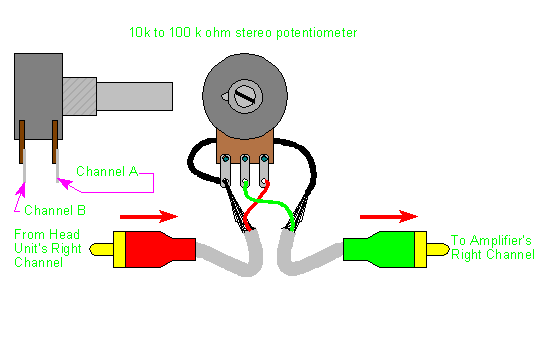
|
Vintage Asylum Classic gear from yesteryear; vintage audio standing the test of time. |
|
In Reply to: Off topic question for Mike posted by airtime on July 9, 2016 at 18:03:24:

I wouldn't do it the way you describe, for a number of reasons. Grounds are usually tied together between sources and preamps to minimize noise - by putting a resistor between the grounds of the source and preamp, you've made it possible for hum levels to go up. Also, the fact that the legs are significantly different lengths, the wires are probably not next to each other, which creates a large physical cross section of the loop that the wires form - not only do you have essentially zero shielding, you've effectively created a loop antenna, making it much more likely you'll pick up noise and interference.
I assume the source is a line level element (e.g., tuner, CD player). If that's correct, the source will have a much lower output impedance (often well under 1 kohm) than the preamp's input impedance (usually between 10 to 100 kohm). If you use good quality, low capacitance coax cable, and put a conventional audio taper potentiometer in series with it (acting as a voltage divider volume control), like the picture above, you can get the "remote control" effect you want and minimize the audible impact (especially if the cable length is only a few feet, like you show in your diagram).
Remember, the output impedance of the source, the capacitance of the coax cable, the resistance(s) of the potentiometer, and the input impedance of the preamp all form an RC low pass filter - your goal is to have the cutoff frequency of that filter be as high as possible (preferably beyond 20 kHz). You could find out the impedances for your source and preamp, the capacitance per foot of your preferred coax, and select a readily available potentiometer (10 kohm and 100 kohm are easy to come by, though one rule of thumb is the potentiometer should be roughly equal to the input impedance of the unit you're feeding, in this case your preamp), and you could do a spreadsheet model of the losses as you go up in frequency. (This is a good learning exercise for anyone new to circuits.)
Or you could just go ahead and buy the parts, make the control, and see if you can hear the difference. The link below is one I happened to find on how to do it.
If you want to go all out, you can make a stepped attenuator - much more work, much more expensive, but with some (subtle) sonic advantages.
I've made several such simple passive volume controls (for between sources and a power amp), and I don't hear any degradation. I'm sure if I measured the signal, there'd be some losses somewhere out beyond where my hearing stops, but I don't hear it. And by using coax, you get the shielding you need to keep noise/hum/etc inaudible.
Have fun - it's a great learning project, and inexpensive, too.
This post is made possible by the generous support of people like you and our sponsors:
Follow Ups
- RE: Off topic question for Mike - JonM 13:32:30 07/11/16 (0)